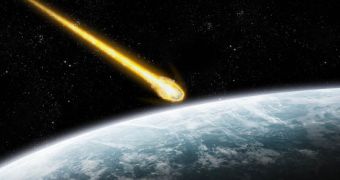A new study published in the journal Planetary and Earth Science details how, after analyzing rock fragments measuring no more than 1 mm in diameter, a team of researchers led by Victor Kvasnytsya concluded that the 1908 Tunguska blast was probably caused by a meteor.
The Tusguska explosion occurred on June 30, 1908. The force of the blast was so great that some 2,000 square kilometers of forest around Russia's Podkamennaya Tunguska river disappeared almost in the blink of an eye, Nature says.
Several witnesses argued time and time again that they had seen an oversized object racing through the atmosphere and then exploding in mid-air.
Still, for many decades, there was no scientific evidence to back up the claims that the blast had been caused by a space rock gone haywire.
More precisely, none of the scientists who took the time to investigate the area where the meteor had allegedly struck managed to locate and collect any fragments whose make-up would prove that a space rock had in fact exploded close to the ground in that part of Russia.
Until Victor Kvasnytsya and his fellow researchers came along, that is. These scientists maintain that the make-up of several small rock fragments recovered in Siberia is consistent with that of iron-rich meteors.
As they put it, data collected while analyzing these rock fragments, “suggest that the studied samples are meteorite micro-remnants.”
“An iron-rich, stony asteroid fits with our understanding of Tunguska,” researcher Gareth Collins of the Imperial College London also believes.
Though these findings are indeed encouraging, it appears that they are not bulletproof.
Thus, several specialists say that, even if the rock fragments do in fact come from a meteor, Victor Kvasnytsya and his colleagues are yet to prove that they ended up on Earth precisely in 1908.
“We get a lot of meteorite material raining down on us all the time. it’s hard to be 100% sure that you’re not looking at that background,” expert Phil Bland explains.
According to several estimates, the Tunguska blast packed the energy equivalent of 3-5 megatons of TNT.
To put things into perspective, it must be said that the meteor that hit Russia a few months back only released the energy equivalent of 460 kilotons of TNT.

 14 DAY TRIAL //
14 DAY TRIAL //